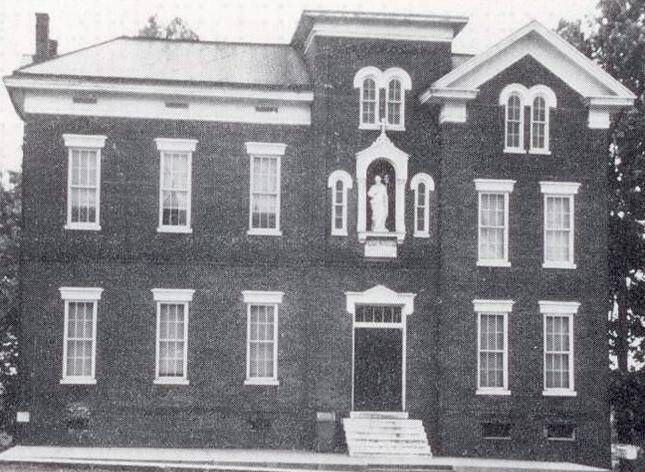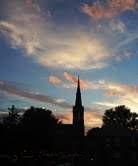Like much of the country following WW 11, the congregation grew with the "baby-boom" generation. The need for a new school building became apparent and in 1958 a new school was constructed at a cost of $237,000. The make-up of the parish underwent changes as well. More and more people began to work in Evansville, and the parish changed from being primarily a farming community to a suburban community of Evansville.
The congregation continued to grow and to meet the societal challenges of post war America. The 1950's drew to a close with a new modern school and a new Pope in Rome. With the new decade came Vatican II's sweeping changes. The Roman Catholic Church across the world began the slow process of transition. Some saw new opportunities, others saw tradition die, when masses were said in English for the first time during 1967.
If time brought change in tradition, it also took its toll on the church itself. The renovation of 1940 ere crumbling in 1966 and by 1968 a major renovation of the church was undertaken. And the community continued to meet challenges in maintaining the school and the parish. Throughout it's history, not only has there been a long standing tradition of people taking on many of the jobs of keeping the parish buildings maintained, they also developed a long tradition of service and outreach to the larger world. One example of this is the twenty-five partnership with the people of St. James Parish in Plaine du Nord which began in 1988 with a visit to the parish by Fr. Francis Schroering, Pastor of the parish and Gilbert Fehrenbacher, a parishioner and deacon of the church.
By 1991, the parish was set to the celebrate their 150th anniversary. To commemorate this event, the parish undertook the project of building a home for Habitat. In addition, a major renovation of the church was undertaken, including building a new mahogany altar, baptismal font, cross and refurbishing of the church pews. On April 1, 1990, Bishop Gerald Gettelfinger joined the community to dedicate the new altar and celebrate the 150th anniversary of the parish.
The next twenty-two years in the life of the parish saw more changes. The congregation continued to grow. As the school building got older and other needs, particularly a gym/multi-purpose building became more necessary, the people of the parish undertook a major building campaign to build a multi-purpose facility, add classrooms for pre-school, science and library, administrative offices and meeting rooms as well as air-conditioning the building. The $1.4 million campaign was five times the cost of the original school. And even this was not enough as unforeseen expenses for asbestos removal and water treatment plant updates added more than $200,000 to the projected costs. Parishioners not only provided money but also well over $200,000 in contributed services. Ground was broken in 1997 and the building was completed in 1998. By 2003 the building had been entirely paid for.
In 2003, a follow-up campaign was begun to complete the work that was left undone by the first capital campaign. Through this campaign, four additional classrooms were built, energy efficient windows installed, a new science lab, library and computer lab were built and a new boiler was installed in the school. All told, another 1.3 million dollars of improvements. By 2008, this project had also been completely paid for. And the work of education continued—new students, new teachers, new technological advances, new education standards. In 2008, another campaign was begun to, among other things, put a new roof on the original school building, dedicated some fifty years ago. Over $350,000 was solicited and raised to complete this project.
In March, 2023, a tornado touched down on the parish campus. Fortunately, the damage was limited to the church roof being torn off. As parishioners discerned the best way forward, they soon realized that this provided a great opportunity to do a complete overhaul of the church to make sure it would be in good shape for years to come.
A plan was put together that involved replacing the church roof, sealing the brick exterior of the church, building a new hnadicapped ramp, installing new carpet and repainting the interior of the church. The plan also included intalling a collumbarium for creamtion burials in our cemetery, major repairs to the parking lot, instaling new cabinets in the school classrooms and a major upgrade to our waste water treament plant. All told, over $1.8 million was spent on these projects which included contributions from parishioners as well as insurance payments.





